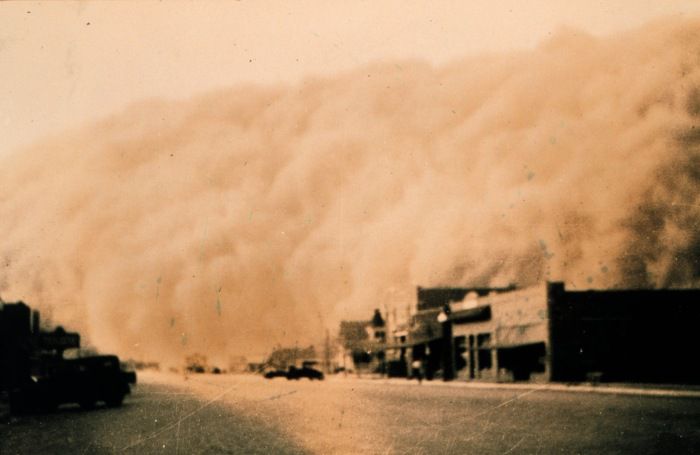-
 Spectacled bear
Spectacled bear
-
 Anti-EGFR
Anti-EGFR
-
 Topiramate
Topiramate
-
 Asian brown cloud
Asian brown cloud
-
 Gulf Stream
Gulf Stream
-
 Taurids
Taurids
-
 Western Palearctic ecozone
Western Palearctic ecozone
-
 Durability
Durability
-
 Trade winds
Trade winds
-
 DRCS
DRCS
-
 Double-flow controlled mechanical ventilation (CMV)
Double-flow controlled mechanical ventilation (CMV)
-
 Asteroid
Asteroid
-
 Quantum computer
Quantum computer
-
 Microprocessor
Microprocessor
-
 Electronic signature
Electronic signature
-
 bps bits per second
bps bits per second
-
 Magnetosphere
Magnetosphere
-
 Pink moon
Pink moon
-
 Lidar
Lidar
-
 Registrar
Registrar
-
 Phyllite
Phyllite
-
 H.261
H.261
-
 Nuclear moderator
Nuclear moderator
-
 Internal energy
Internal energy
-
 Resistivity
Resistivity
-
 Ester bond
Ester bond
-
 Proboscis
Proboscis
-
 SSH
SSH
-
 Cryogenian
Cryogenian
-
 Achlorhydria
Achlorhydria
Dust Bowl
The Dust Bowl is a series of dust storms that descended on the plains of the United States and Canada between 1930 and 1940. These dust storms destroyed crops, stripped the soil and buried fields, agricultural machinery and buildings in dust.
The Dust Bowl was therefore the cause of the agricultural disasters and rural exoduses in the centre of the United States.
Causes and consequences of the Dust Bowl
This phenomenon was due to the combination of a series of droughts, which followed a period of abnormal humidity in what was called the Great American Desert; and intensive farming carried out without erosion preventing techniques.
Stripped of plant cover, local plants and perennial crops, the soil did not absorb any humidity and was no longer held down by roots. Wind erosion was therefore intense and resulted in the destruction of arable land, and immense dust storms.
Measures implemented to contain these consequences
The government of the United States reacted by creating a soil conservation service (now called the Natural Resources Conservation Service), deploying major efforts in the fight against erosion (tree belts, new farming techniques, etc.) and drastically reducing the size of cattle herds.
In parallel, measures to support the populations and farmers affected were implemented.
 The Dust Bowl in action: a dust storm approaches Stratford, Texas (1935). © NOAA George E. Marsh Album
The Dust Bowl in action: a dust storm approaches Stratford, Texas (1935). © NOAA George E. Marsh Album
Latest
Fill out my online form.



